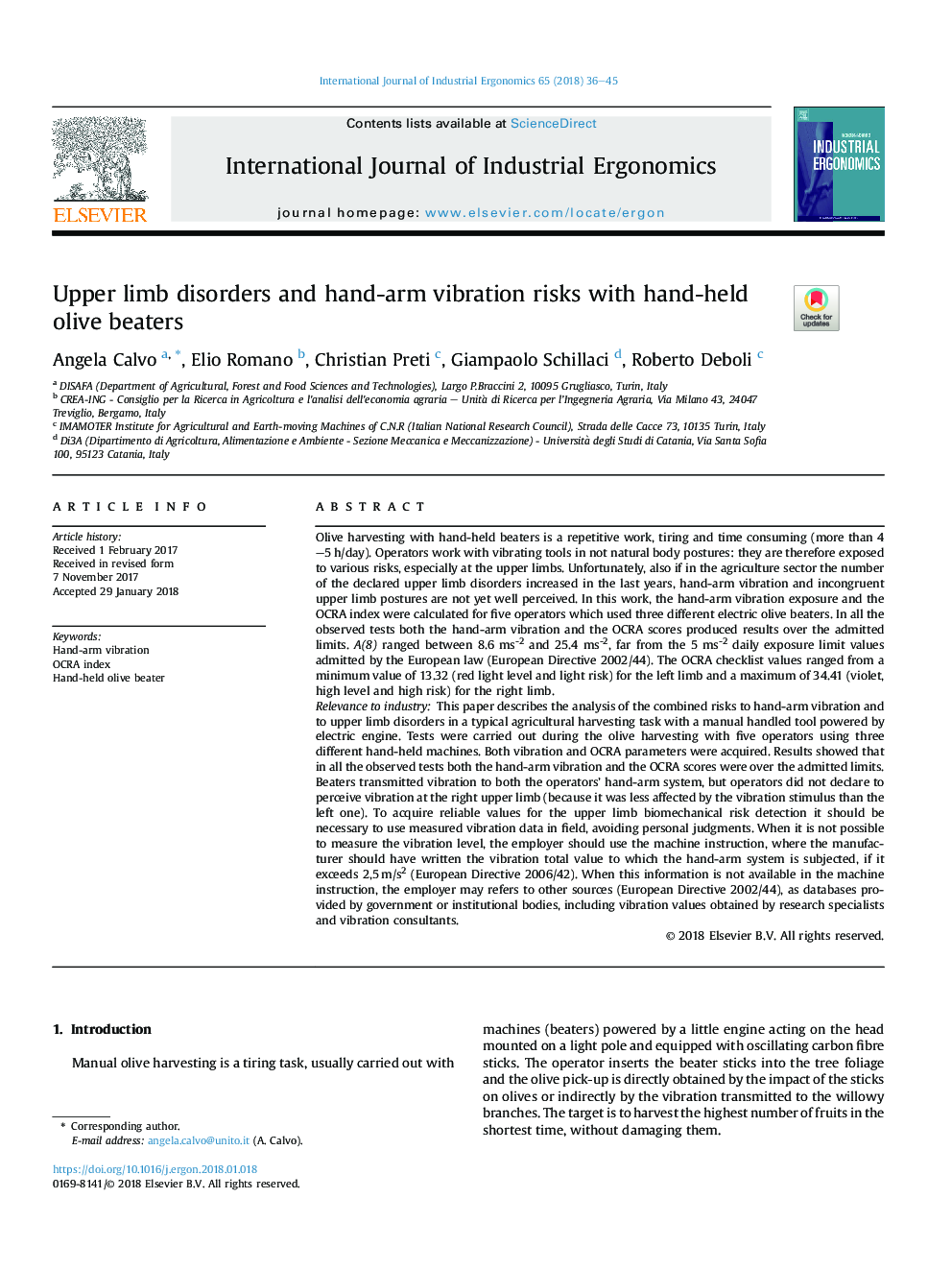| Article ID | Journal | Published Year | Pages | File Type |
|---|---|---|---|---|
| 7530413 | International Journal of Industrial Ergonomics | 2018 | 10 Pages |
Abstract
This paper describes the analysis of the combined risks to hand-arm vibration and to upper limb disorders in a typical agricultural harvesting task with a manual handled tool powered by electric engine. Tests were carried out during the olive harvesting with five operators using three different hand-held machines. Both vibration and OCRA parameters were acquired. Results showed that in all the observed tests both the hand-arm vibration and the OCRA scores were over the admitted limits. Beaters transmitted vibration to both the operators' hand-arm system, but operators did not declare to perceive vibration at the right upper limb (because it was less affected by the vibration stimulus than the left one). To acquire reliable values for the upper limb biomechanical risk detection it should be necessary to use measured vibration data in field, avoiding personal judgments. When it is not possible to measure the vibration level, the employer should use the machine instruction, where the manufacturer should have written the vibration total value to which the hand-arm system is subjected, if it exceeds 2,5â¯m/s2 (European Directive 2006/42). When this information is not available in the machine instruction, the employer may refers to other sources (European Directive 2002/44), as databases provided by government or institutional bodies, including vibration values obtained by research specialists and vibration consultants.
Keywords
Related Topics
Physical Sciences and Engineering
Engineering
Industrial and Manufacturing Engineering
Authors
Angela Calvo, Elio Romano, Christian Preti, Giampaolo Schillaci, Roberto Deboli,
